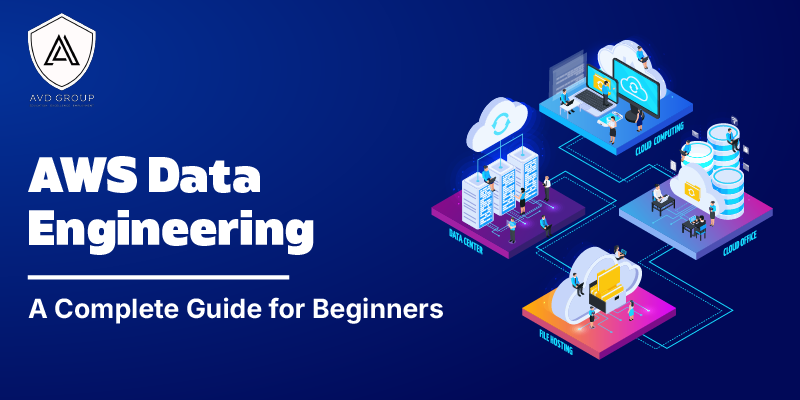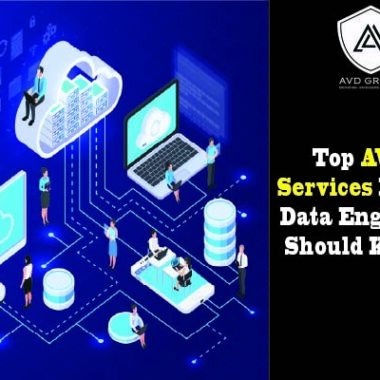A data engineer’s main job is to make sure that organisations can gather, process, and analyse huge amounts of data quickly and correctly in this age of data-driven decision-making. With more and more people using the cloud, Amazon Web Services (AWS) has become a giant, providing a complete environment for data engineering. Signing up for an AWS data engineering course for beginners is a great way to learn the basics if you want to become an AWS Data Engineer.
How to Become an AWS Data Engineer
To learn AWS data engineering in Bhubaneswar and become an expert in managing and improving data processes in the AWS ecosystem, you need to plan ahead. Check out this step-by-step guide for an introduction to AWS data engineering and getting certified.
- Step 1: Build a Strong Base
For AWS data engineering certifications, you must have the following:
- Experience in data engineering: 2–3 years of experience with data modelling, importing, transforming, protecting, managing, and designing the best data stores.
- Getting hands-on with AWS: 1–2 years of using AWS for data jobs like encryption, governance, logging, and comparing costs and benefits.
- SQL and Good Data: SQL on AWS skills and the ability to analyse data and ensure consistency.
IT Knowledge in General
- Extract, Transform, and Load (ETL) processes must be set up and maintained.
- Using high-level computing ideas that don’t depend on the language as needed by the pipeline.
- Being able to use Git tools for source control.
- Knowledge of how to store info in data lakes.
- Understand basic ideas about how networks, files, and computers work.
- Step 2: Learning the AWS Data Engineer Certification Curriculum
To prepare well, you need to know what the test covers. The DEA-C01 test is divided into several categories, each testing a different set of skills. Looking into the best AWS data engineering courses can help you improve on these subjects and prepare for the test.
- Domain 1 – Data Ingestion & Transformation:
This includes reading and ingesting data from different sources, improving ETL speed, fixing problems, and setting up data pipelines.
- Domain 2 – Data Store Management:
This part focuses on choosing storage options, managing data catalogues, designing schemas, dealing with schema evolution, and integrating migration tools.
- Domain 3 – Data Operations & Support:
Automates tests for data analysis, pipeline orchestration, problem-solving, tracking, and ensuring the data quality.
- Domain 4 – Data Security & administration:
Look at strategies for protecting data, such as authentication, authorisation, encryption, compliance, logging, and administration.
- Step 3: Gain Experience by Practicing
Getting real-world experience is one of the most important things you can do to do well on the AWS Certified Data Engineer test. To get the best results, candidates should really get to know AWS services and use what they learn to solve real-life data engineering problems. This practical experience is a great addition to theoretical knowledge as it helps students develop the problem-solving skills needed to handle different situations.
Read On: The Role of Data Engineering in Businesses Grow and Innovation
- Step 4: Check out More Communities and Learning Resources
These key tips will help you get ready for the AWS Certified Data Engineer – Associate exam:
- Look at the AWS documentation: Learn more about AWS’s data services, best practices, and how they can be used in the real world.
- Sign up for AWS Communities: Join sites like Stack Overflow and the AWS Developer sites to learn from the best.
- Go to Workshops and Webinars: You can stay updated on business trends and new ideas through expert-led sessions.
- Look over Some Sample Questions: You can get used to the test style by taking AWS and third-party mock exams.
- Step 5: It’s Important to Practise!
Practising every day is very important. Check out the hands-on labs for AWS, use Redshift, S3, Glue, Athena, Kinesis, and QuickSight to build real-world projects, and take timed practice tests. Find your weak spots, improve your skills, and boost your confidence before the test.
Adjust to New Technologies
Be ready to change paths and adapt as cloud technology and data engineering progress. To stay competitive, use new technologies like serverless computing, containerisation, and machine learning integration. As an AWS Data Engineer, you can be forward-thinking and take on new challenges by taking the AWS data engineering course for beginners and keeping your information up-to-date and flexible.
AVD Group offers customised training, expert guidance, and real-life projects to help you succeed and become a professional. Sign up today!
Frequently Asked Questions
- What is AWS Data Engineering?
AWS Data Engineering uses Amazon Web Services (AWS) to plan, build, and run data systems. It offers services and tools for storing, handling, and analysing data.
- Why is AWS important for data engineering?
AWS offers cloud-based options that are powerful, scalable, and cost-effective for working with big datasets, processing them in real-time, and performing advanced analytics. Its guided services make infrastructure simpler and more effective.
- Is AWS Data Engineering suitable for beginners?
Yes! Beginners can start with basic AWS services like S3, RDS, and Glue. As they get more comfortable, they can move on to more advanced topics like data lakes, real-time analytics, and machine learning.








